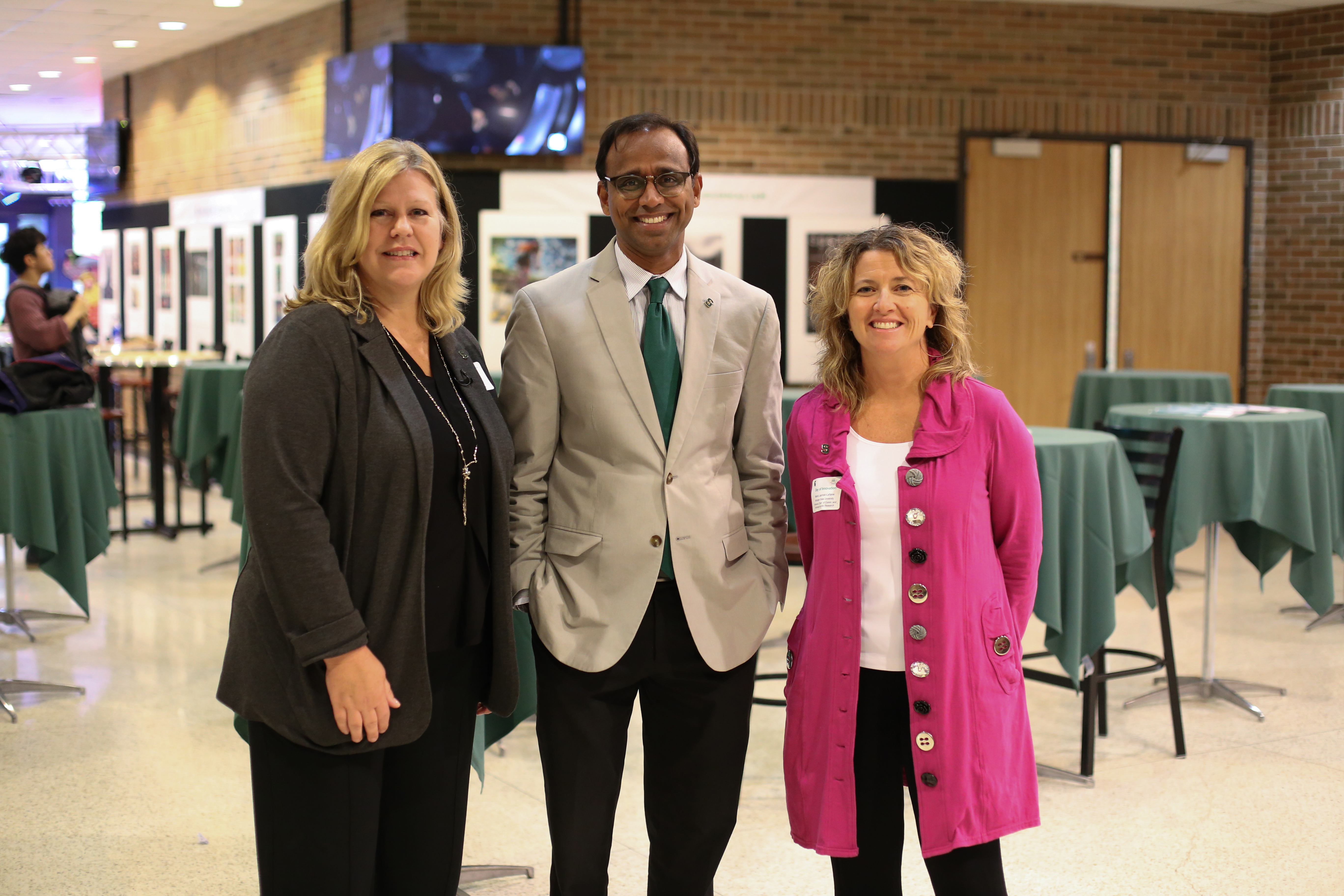Kami Silk, Ph. D., Former ComArtSci Professor, Returns to Share Research on Breast Cancer Communications During HRC’s Day of Innovation
During Health and Risk Communication’s Day of Innovation, Kami Silk, Ph.D, former ComArtSci faculty member, presented her research on breast cancer risk communication. The keynote speech, held on Sept. 27 in the ComArtSci building, addressed how scientists and researchers can translate breast cancer findings to the general public and to pediatricians who wish to inform their patients.
The Importance of Breast Cancer Research
Breast cancer rates are on the rise, Silk said. Sharing information from the Centers for Disease Control, Silk revealed there was a steady increase of .4 percent a year in terms of new breast cancer cases. In fact, out of all cancer cases to come out of 2019, 30 percent of them are projected to be related to breast cancer.
“It’s not this downward trend as we might hope. Certainly, [there is] better treatment, early detection. It’s all the better for sure, but we aren’t necessarily solving a problem here.” said Silk.
There are some misconceptions about breast cancer that Silk found to be common in the general populace. These misconceptions include the overemphasis on family history in terms of contracting the disease, the things people need to avoid when going about cancer prevention and the belief that “Everything causes cancer, so why bother?”
The biggest risk factor for getting breast cancer? Silk informed the audience that the answer is getting older in age, and that genealogy may not play as big of a role.
Silk also discussed the lack of awareness some women may have in relation to breast cancer. Emphasis has been placed on other diseases that showed stronger connections to family history and genetics, such as diabetes and cardiovascular disease. Kami noticed a lack of focus on breast cancer communication in the general population.
“Often times, research doesn’t reach the public,” said Silk. “Taxpayer dollars fund this research, right? So, why shouldn’t we have a mechanism that goes directly back so that it makes it lay friendly for individuals?”
Silk explained that women are most susceptible during seven stages she refers to as the “windows of susceptibility.” During these periods, certain chemicals, known as endocrine disruptors, can increase a woman’s risk of contracting breast cancer. Plastic bottles, laundry detergents and even sunscreen contain these dangerous chemicals. If women are informed of what these are and during what periods to avoid them, Silk said they can reduce their risk.
Risk Communication for All
In partnership with WKAR, Silk created three training videos for pediatricians and health care professionals. These training modules teach key facts about breast cancer that Silk said are not as well-known among healthcare practitioners.
This idea came about from a study she conducted with pediatricians in which she tested them on their knowledge of breast cancer. While the participants did score low, they all showed an interest in wanting to learn more about the “windows or susceptibility.” Silk devised the training modules in order to provide a comprehensive guide to breast cancer and its possible causes and risks. The modules explain the “windows of susceptibility,” endocrine disruptors and what women can do to lower their risk in great detail. To evaluate how effective the project was, Silk collected data related to the training modules, and found the results to be positive.
“Knowledge is not the solution. Knowledge does not equal behavior change, but at the same time, you can see from time period to time period, these [results] are becoming more stable.” said Silk.
To advance her work in health and risk communication, Silk plans to create more video messaging to reach a broader audience and raise awareness. The new videos target a younger audience and contain many of the points introduced in the training modules for healthcare professionals. While this work is in progress, Silk continues to research ways to engage audiences and best inform women about breast cancer prevention.
By John Castro
